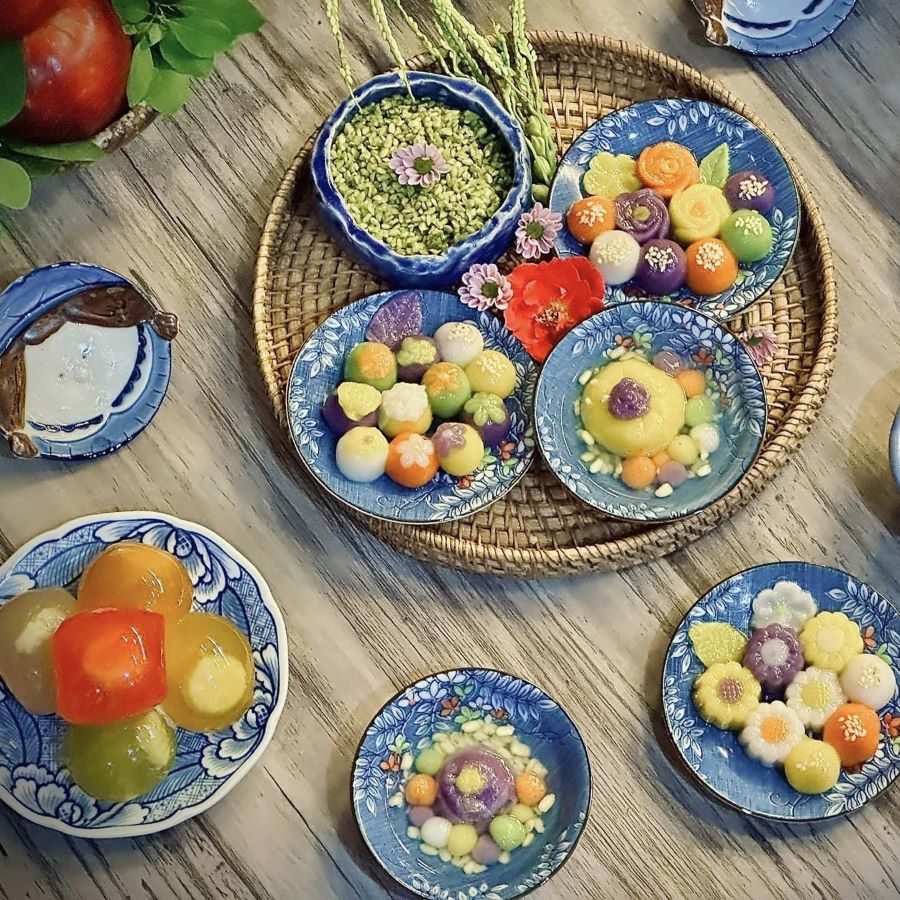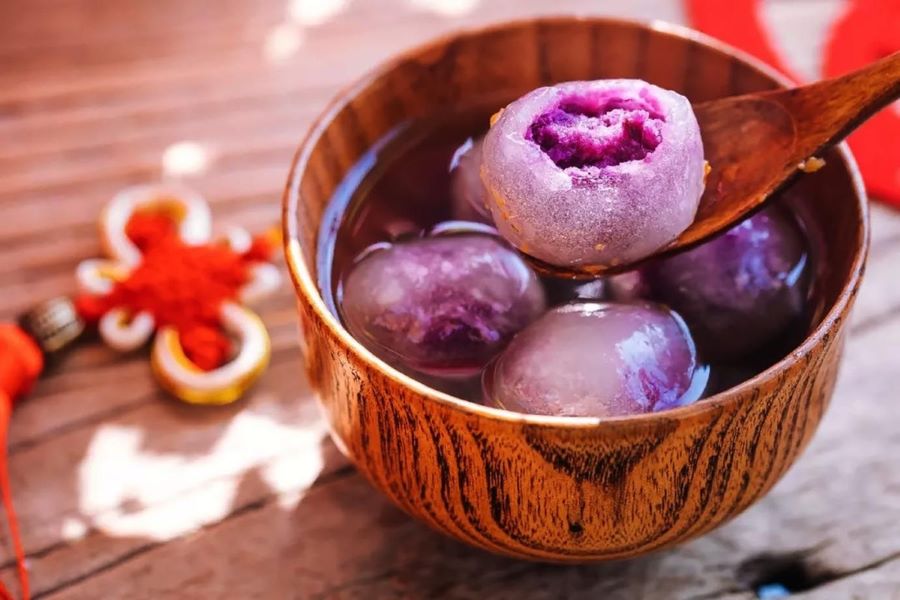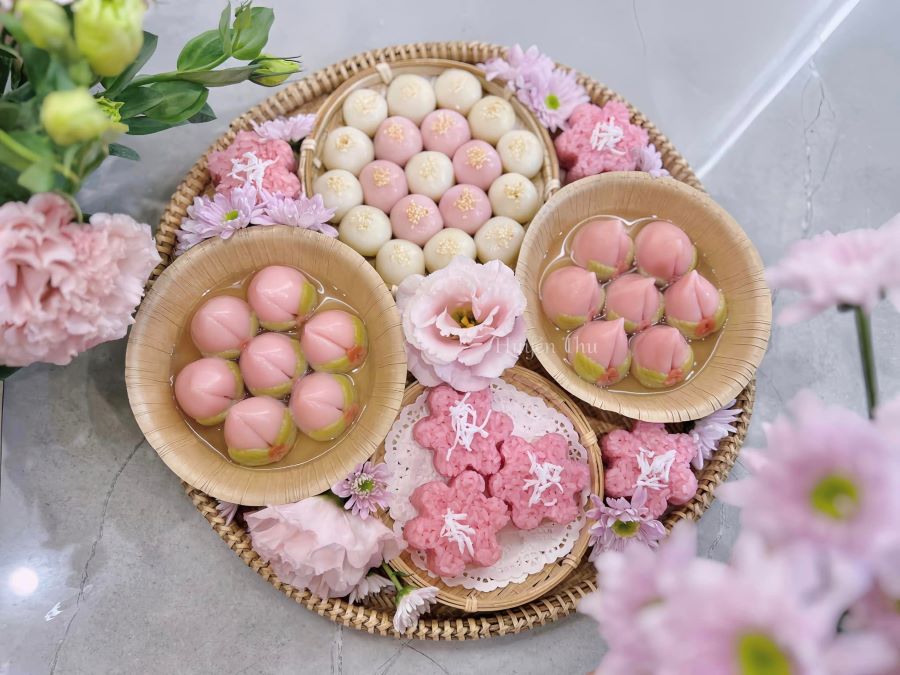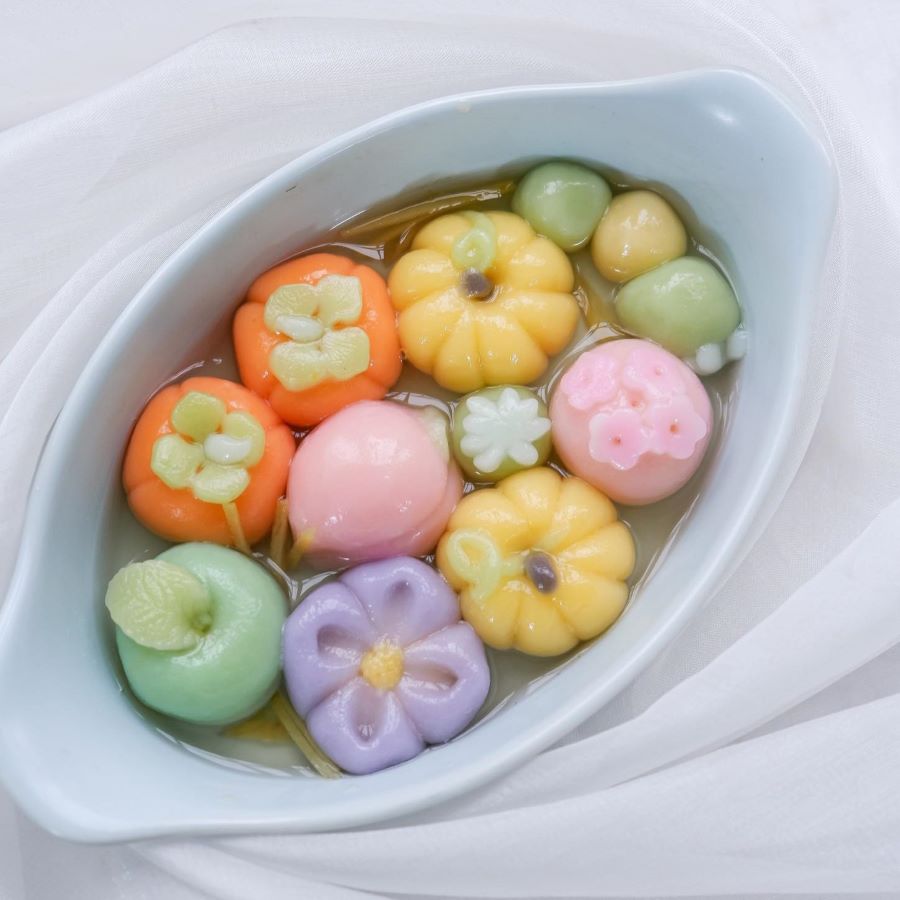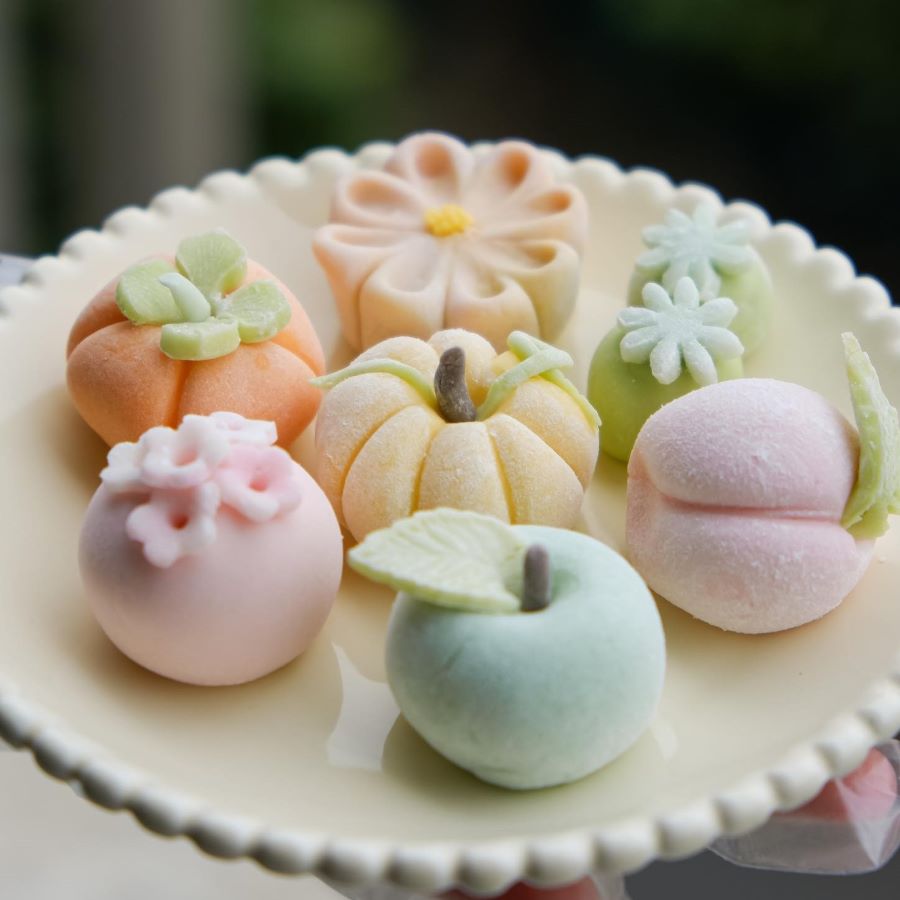Sticky rice dumpling "masterpieces" for Cold Food Festival
The endless creativity of Vietnamese housewives helps to enrich the ancestral offerings at the Han Thuc Festival, which fell on April 11 this year.
Tet Han Thuc, or Cold Food Festival, is one of the four most important traditional festivals of the year, according to ancient Vietnamese belief. These festivals include Tet Holiday, which is usually held in late winter to bid farewell to the old year and welcome the Lunar New Year; Cold Food Festival, which marks the end of spring; Tet Doan Ngo or Insect Killing Festival, which is organized to welcome summer; and Mid-Autumn Festival, which celebrates the time when the moon is at its fullest and roundest in the year.
| The beautiful offerings for the Cold Food Festival prepared by a skilled Hanoi housewife. |
Nowadays, it is common for Vietnamese families to get together and cook typical dishes to offer to their ancestors.
The Cold Food Festival is often held on the third day of the third lunar month, or on April 11 this year. As usual, Hanoians make two types of sweet dumplings - banh troi (floating dumplings) and banh chay (sweet mung bean dumplings) - to offer to their ancestors.
According to cultural researcher Tran Quang Duc, the ritual of eating these dumplings during the Cold Food Festival in Vietnam dates back to the Le Trung Hung dynasty from 1533 to 1789.
The creations of skilled Vietnamese housewives also show the unique cultural traits of Vietnam, which is an agrarian country that is associated with the wet rice plant. Two types of dumplings, all made from delicious sticky rice flour, are the result of the hard work of farmers.
| Each of the Vietnamese cakes conveys a specific meaning. |
"The banh troi has a round shape, reminiscent of the Vietnamese wish "Me tron con vuong" or a successful birth and good health for both mother and child. It also reminds people of the Vietnamese legend of Mother Au Co, who gave birth to an egg sac from which 100 children were born, the ancestors of the Bach Viet clans," he said.
"Meanwhile, banh chay is also made with glutinous flour (representing yin) and stuffed with mung bean paste (representing yang), demonstrating the harmony of yin and yang according to Eastern concepts. It is also a prayer of Vietnamese farmers for a year of favorable weather and good harvests," he added.
“Thus, the Vietnamese Cold Food Festival bears the meaning of remembrance and gratitude to the deceased ancestors,” he concluded.
In today's busy world, savvy housewives do not need to prepare the dishes themselves, but order them from online stores or buy them at the market. But as with many things, the best is homemade. Many skilled Vietnamese cooks choose to make the cakes themselves.
| Traditionally, the banh troi and banh chay are white with a sugary taste, but talented cooks can make them more colorful and tasty by adding food coloring or flavoring to the dough |
| Transparent floating dumpling is one of the creations of Vietnamese housewives at this year's Cold Food Festival |
| The Vietnamese-style dumplings and sticky rice in pink tone color |
| The eye-catching banh chay dumplings in the shape of animals delight the kids. |
They also come in a variety of shapes and colors.
|
| The color of these dumplings is said to come from natural ingredients. |



